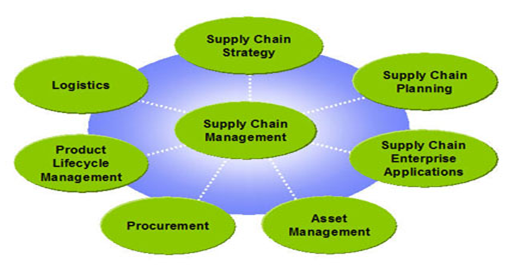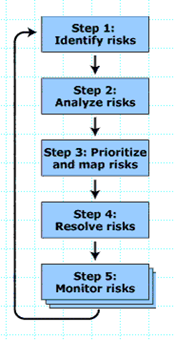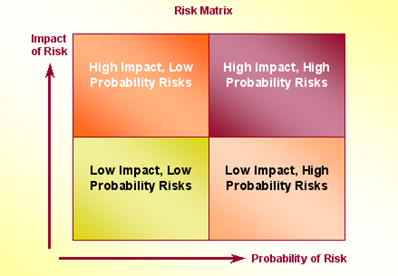 All papers examples
All papers examples
Disciplines

- MLA
- APA
- Master's
- Undergraduate
- High School
- PhD
- Harvard
- Biology
- Art
- Drama
- Movies
- Theatre
- Painting
- Music
- Architecture
- Dance
- Design
- History
- American History
- Asian History
- Literature
- Antique Literature
- American Literature
- Asian Literature
- Classic English Literature
- World Literature
- Creative Writing
- English
- Linguistics
- Law
- Criminal Justice
- Legal Issues
- Ethics
- Philosophy
- Religion
- Theology
- Anthropology
- Archaeology
- Economics
- Tourism
- Political Science
- World Affairs
- Psychology
- Sociology
- African-American Studies
- East European Studies
- Latin-American Studies
- Native-American Studies
- West European Studies
- Family and Consumer Science
- Social Issues
- Women and Gender Studies
- Social Work
- Natural Sciences
- Anatomy
- Zoology
- Ecology
- Chemistry
- Pharmacology
- Earth science
- Geography
- Geology
- Astronomy
- Physics
- Agriculture
- Agricultural Studies
- Computer Science
- Internet
- IT Management
- Web Design
- Mathematics
- Business
- Accounting
- Finance
- Investments
- Logistics
- Trade
- Management
- Marketing
- Engineering and Technology
- Engineering
- Technology
- Aeronautics
- Aviation
- Medicine and Health
- Alternative Medicine
- Healthcare
- Nursing
- Nutrition
- Communications and Media
- Advertising
- Communication Strategies
- Journalism
- Public Relations
- Education
- Educational Theories
- Pedagogy
- Teacher's Career
- Statistics
- Chicago/Turabian
- Nature
- Company Analysis
- Sport
- Paintings
- E-commerce
- Holocaust
- Education Theories
- Fashion
- Shakespeare
- Canadian Studies
- Science
- Food Safety
- Relation of Global Warming and Extreme Weather Condition
Paper Types

- Movie Review
- Essay
- Admission Essay
- Annotated Bibliography
- Application Essay
- Article Critique
- Article Review
- Article Writing
- Assessment
- Book Review
- Business Plan
- Business Proposal
- Capstone Project
- Case Study
- Coursework
- Cover Letter
- Creative Essay
- Dissertation
- Dissertation - Abstract
- Dissertation - Conclusion
- Dissertation - Discussion
- Dissertation - Hypothesis
- Dissertation - Introduction
- Dissertation - Literature
- Dissertation - Methodology
- Dissertation - Results
- GCSE Coursework
- Grant Proposal
- Admission Essay
- Annotated Bibliography
- Application Essay
- Article
- Article Critique
- Article Review
- Article Writing
- Assessment
- Book Review
- Business Plan
- Business Proposal
- Capstone Project
- Case Study
- Coursework
- Cover Letter
- Creative Essay
- Dissertation
- Dissertation - Abstract
- Dissertation - Conclusion
- Dissertation - Discussion
- Dissertation - Hypothesis
- Dissertation - Introduction
- Dissertation - Literature
- Dissertation - Methodology
- Dissertation - Results
- Essay
- GCSE Coursework
- Grant Proposal
- Interview
- Lab Report
- Literature Review
- Marketing Plan
- Math Problem
- Movie Analysis
- Movie Review
- Multiple Choice Quiz
- Online Quiz
- Outline
- Personal Statement
- Poem
- Power Point Presentation
- Power Point Presentation With Speaker Notes
- Questionnaire
- Quiz
- Reaction Paper
- Research Paper
- Research Proposal
- Resume
- Speech
- Statistics problem
- SWOT analysis
- Term Paper
- Thesis Paper
- Accounting
- Advertising
- Aeronautics
- African-American Studies
- Agricultural Studies
- Agriculture
- Alternative Medicine
- American History
- American Literature
- Anatomy
- Anthropology
- Antique Literature
- APA
- Archaeology
- Architecture
- Art
- Asian History
- Asian Literature
- Astronomy
- Aviation
- Biology
- Business
- Canadian Studies
- Chemistry
- Chicago/Turabian
- Classic English Literature
- Communication Strategies
- Communications and Media
- Company Analysis
- Computer Science
- Creative Writing
- Criminal Justice
- Dance
- Design
- Drama
- E-commerce
- Earth science
- East European Studies
- Ecology
- Economics
- Education
- Education Theories
- Educational Theories
- Engineering
- Engineering and Technology
- English
- Ethics
- Family and Consumer Science
- Fashion
- Finance
- Food Safety
- Geography
- Geology
- Harvard
- Healthcare
- High School
- History
- Holocaust
- Internet
- Investments
- IT Management
- Journalism
- Latin-American Studies
- Law
- Legal Issues
- Linguistics
- Literature
- Logistics
- Management
- Marketing
- Master's
- Mathematics
- Medicine and Health
- MLA
- Movies
- Music
- Native-American Studies
- Natural Sciences
- Nature
- Nursing
- Nutrition
- Painting
- Paintings
- Pedagogy
- Pharmacology
- PhD
- Philosophy
- Physics
- Political Science
- Psychology
- Public Relations
- Relation of Global Warming and Extreme Weather Condition
- Religion
- Science
- Shakespeare
- Social Issues
- Social Work
- Sociology
- Sport
- Statistics
- Teacher's Career
- Technology
- Theatre
- Theology
- Tourism
- Trade
- Undergraduate
- Web Design
- West European Studies
- Women and Gender Studies
- World Affairs
- World Literature
- Zoology
Mitigating Risk in Transportation Costs, Essay Example
Hire a Writer for Custom Essay
Use 10% Off Discount: "custom10" in 1 Click 👇
You are free to use it as an inspiration or a source for your own work.

Introduction
This paper examines the cost concepts in transportation from the lens of Accounting, Economic and Social costs. How a business organization should mitigate the risks associated with these costs in order to prevent them from spiraling out of control. It is considered that proper supply chain management coupled with financial budgetary control are key ingredients to success. It is argued that failure to take these important aspects into consideration can result in business failure.
Transportation in the Supply Chain
Transportation decisions are an important part of satisfying customer demand. This has to be balanced between getting the goods quickly to their destination (expensive) against slower means like shipping and overland freight (cheaper). The use of air transportation is an effective means of delivering goods quicker but this is a high cost compared to other alternatives like rail or sea transport. The other aspect is that by using sea and rail transport there is a need to keep higher inventory levels than normal. At the same time maintaining the high level of customer service expected and these need to be factored in when making the decision on what transportation method will be used (Rockford Consulting, 2012).
The means of retaining efficiency in supply chain management is to ensure a seamless exchange of information throughout the supply chain. As such you need to ensure that there are no blockages caused by unnecessary processes or administration requirements that make the process too unwieldy. It is equally important to ensure that there is good harmony and synergy between the computer hardware and software applications that support the system but it still remains important to conduct regular business process analysis and eliminate any redundancies or duplication of effort.

The illustration to the right shows the different components within Supply Chain Management and how these form an integrated holistic process.
Mitigating Risks
Financial Control – The key towards the management of financial risks in Transportation costs is by having an effective budgetary control system. Planned levels of expenditure (budgets) are made for all levels of operating costs and these are measured against Actual results in the monthly accounts. These will produce variances, either positive (underspend) or negative (overspend). Those negative variances that fall outside of a prescribed tolerance level e.g. +/- 10% of the budget figure, should be made the point of financial investigation and appropriate remedial action taken. This could be the result of increased supplier costs, unplanned overspend, an increase in the quality of materials and hence costs. There may be numerous reasons but the objective should be to get the expenditure back within the budget tolerance limit.
Financial control should also be linked to Project Management. In particular examination of contingency plans for alternate suppliers within the supply chain. Lack of appropriate alternative suppliers can expose the firm to unplanned financial risks and cost escalation. The concept of Analytical Risk Mitigation is an approach that explores the relationship between cost and change and this is linked to economic considerations like supply and demand, marginal cost statements, break even analysis. This approach allows firms to deploy risk mitigation strategies that diversify or spread the nature of the risk thereby minimizing the amount of cost disruption to the business.
Economic Measures – This ties in with logistics and ensuring that measures are taken to mitigate expenditure within the transportation of goods within the supply chain. Logistics may be defined as the function that manages the movement of the materials in the supply chain. This is the movement of materials from the initial supply to that of the final delivery to the customer. The concept of logistics embraces a number of distinct activities like procurement, warehousing, inventory management, order processing, recycling and distribution etc. Benefits of logistics management means that managers will be better informed and make smarter decisions if they understand the business processes within their organization. This is critical in the achievement of business goals. Efficient logistics management is also an important vehicle in the development of the business marketing strategy. The use of logistics software has the benefit of placing controls within the system and ensures that proper routing choices are made. This includes the selection of the correct carriers and optimal shipping routes. These time savings provide a considerable return on investment and reduces the level of risk involved.
One of the goals of integrated supply chain management is to remove barriers in order to allow the free flow of materials. One such barrier is that of shared resources in the supply chain. One new approach is removing this barrier and thereby changing the focus to that of ‘buyer focus’. Two existing approaches on the removal of barriers are that of lean thinking and agile manufacturing. Shared resources create a problem by adding to the complexity of planning and control, as such creating a barrier. Buyer focus looks towards splitting the buyer process into more manageable components in order to meet improved performance criteria. In this concept resources are singled out in order to serve one buyer. Hence one buyer serves the whole range of supply products.
The Importance of Project Management
The management of risks is one of the most critical elements of project management. Despite the importance of this it is one of the least understood. Risks can occur at any stage of a project development and the severity often increases with the depth the project has penetrated. Risks or Issues have the ability to quickly destroy the integrity of project plans and as there is no avoiding them it is essential to have a risk mitigation strategy in place. (Pacelli, L. 2011). The Project Management Body of Knowledge (PMBOK) provides an excellent step-by-step guide to implementing risk management methodology in a project. The five step approach is illustrated in Fig 1 to the right. (1) Identify the project risks – techniques used are brainstorming, interviews, business process and data analysis, observation etc. At this stage of preliminary risk assessment we are trying to capture the main risks or threats. (2) Analyse the risks – understand what the threat is and what it constitutes in potential damage if it occurs (3) prioritize the risks – essentially in terms of severity to the project.

Conclusion
Risks and responses should be reported to the project sponsor and other management stakeholders on project status and progress reports. Risk management items should be also part of regularly scheduled project Steering Committee meetings. When risk events occur, the impact and actual damage to the project are assessed. Appropriate corrective response plans, workarounds and action items are executed. When a risk event does occur, it becomes an issue that has an impact on the project deliverables and as such it is important that these are resolved at the earliest opportunity The probability and impact matrix is a vehicle whereby the Project Manager and his team determine elements of risks involved in the project and the activities or phases where these may impact the project.

Works Cited
Pacelli, L. (2011, 11 13). Manage project risks and issues. Retrieved from Microsoft Office: http://office.microsoft.com/en-us/project-help/manage-project-risks-and-issues-HA010007249.aspx
Rockford Consulting. (2012, 7 20). Supply Chain Management. Retrieved from Rockford Consulting: http://rockfordconsulting.com/supply-chain-management.htm

Stuck with your Essay?
Get in touch with one of our experts for instant help!

Time is precious
don’t waste it!
writing help!


Plagiarism-free
guarantee

Privacy
guarantee

Secure
checkout

Money back
guarantee

